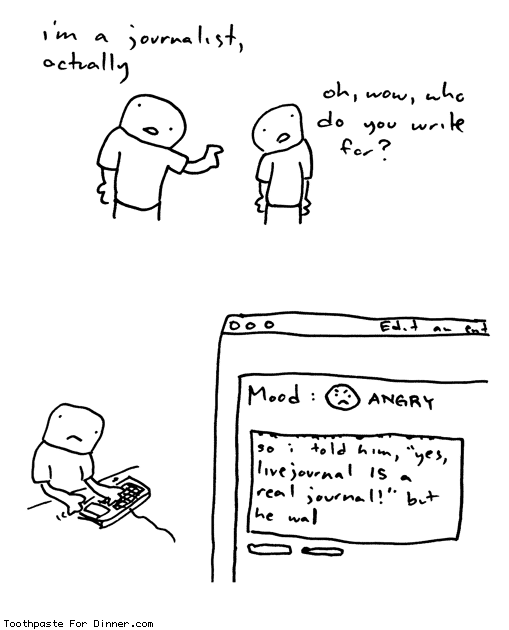If the statistics are to be believed, there’s a high probability that you’re a regular user of Facebook, Twitter, Tumblr, or perhaps all of these social networking sites. Social media offers individuals an opportunity to connect with others, to join a digital community where they can talk, participate and share information. The terms ‘Facebook me’ and ‘retweet’ have become common vernacular, normalising and integrating these social media sites into our everyday lives. Indeed, checking your Facebook newsfeed or seeing what’s trending on Twitter has become part of many people's daily routines. The popularity of these sites cannot be disputed, with Facebook alone boasting over 750 million users worldwide. With access to millions of users from across the globe, Facebook has the potential to be a valuable source for journalists. Similarly, Twitter, which has over 200 million users, “is an extremely useful journalistic resource: reporters can use it to watch for breaking news, follow sources and search for information” (Heald, 2009). What’s trending on Twitter tells us what’s happening around the world and the journalist then seeks to expand on and contextualise this information.
And yet, despite the growing power and prominence of social media, these sites have often been approached with trepidation by the journalism industry. The beauty of social media is that anyone can post anything. However, this is also its downside. It is a basic journalistic principle that news should be factual and ethical and, in the fast paced world of social media, it can often be hard to establish whether the information you’re reading is truth, rumour or a blatant fib. As Posetti states, “the biggest issue with social media is verification” (Posetti 2011). Social media may be valuable sources of information, but it’s when journalists take what they’re reading as credible and factual events (sometimes even recirculating it as news) without checking the facts that they can become an issue. Take for instance Brian Stelter, journalist for the New York Times, who retweeted an image that claimed to depict a tiger roaming the streets of London during the recent London riots. The photo was, in fact, taken in Italy in 2008. It’s somewhat worrying that a journalist working for a credible news organisation republished an image found on Twitter without any attempt at checking their facts and verifying sources.
So, should social media play an intrinsic role in the way journalists source information? As these sites continue to grow, it seems like a wasted opportunity to neglect the potential benefits they have to offer for the modern journalist. However, it is essential that, when taking information from sites such as Twitter, a journalist must “proceed with extreme caution and request evidence to support the claim” (Hill 2011). Fact checking is a fundamental aspect of journalism and, despite the ‘newness’ of social media, some traditional journalistic practices must still be adhered to.
References:
Heald, E 2009, Twitter for Journalists and Newsrooms: Sourcing, Publishing, Connecting. Accessed 1/9/11 2011, <http://www.editorsweblog.org/analysis/2009/06/twitter_for_journalists_and_newsrooms_so.php>
Heald, E 2009, Twitter for Journalists and Newsrooms: Sourcing, Publishing, Connecting. Accessed 1/9/11 2011, <http://www.editorsweblog.org/analysis/2009/06/twitter_for_journalists_and_newsrooms_so.php>
Hill, J 2011, ‘Go Forth and Verify’, The Walkley Magazine, vol. 67, p. 13.
Posetti, J 2011, ‘BBC Social Media Summit Fixates on Creating Open Media’, MediaShift, 7 June. Accessed 1/9/11 <http://www.pbs.org/mediashift/2011/06/bbc-social-media-summit-fixates-on-creating-open-media158.html>

